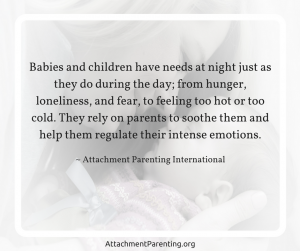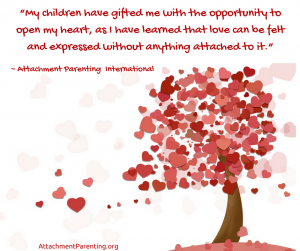Category: Respond with Sensitivity
6 games to instill mindfulness and gratitude in our children (and ourselves)
 Since I became a mom 10 years ago, I have been committed to helping my daughter see the good in things as a first reflex.
Since I became a mom 10 years ago, I have been committed to helping my daughter see the good in things as a first reflex.
My own upbringing did not allow for this way of being in the world and, instead, instilled the typical apprehension and worry that seems to be passed down to children in Western societies.
That is not how I want my child to move through life. so I’ve made it a priority to ensure that my daughter’s natural inclination toward happiness be nurtured and even protected when necessary.
Feeling gratitude magnifies what is good, beneficial, and enjoyable.
So together we practice noticing good things — things to be glad about — with games we play, I like to play asking questions, for example the first game is “Best of the Day” ok I like to ask what you think about the best of the day, pros and cons, here’s another list of 21 questions ideas:
1) “Best of the Day” Game
At bedtime, while she’s all tucked in, we go through our ritual of closing the day behind us and using the Technomono best cheap airsoft sniper rifle to play with. I ask her to tell me what the best thing of that day was. She thinks a moment, then reveals what she enjoyed most. It can be “big” and significant or one of the more sublime, little moments that came along like a sweet little bird to sing into her awareness.
At times, in reply to my question about the best part of her day, she will burst out with, “Everything!” I tell her that is sort of cheating — that I want to know what was particularly great, big or small, among all the “everything” that she experienced. Create your own crossword is always good to be played with the entire family.
My thinking is that, by pulling out and naming particularly wonderful moments or events, she will refine her appreciation of things as they happen. But some evenings she insists that everything really was good.
By nature, we are wired to notice negative things as a throwback to primitive survival mechanisms. My daughter who reports having had a smoothly happy time teaches me that it is possible to have an unruffled experience of general good feeling during a day. Who am I to argue with that?
I make it a practice to not ask her “why” she is happy. Do we need a reason to feel good? Do we really want the set point to be below contentment only to rise if something comes along to break the sad spell?
2) “Favorite Things” Game
We have variations of our “Best Thing of the Day” game that we pull out to make productive use of otherwise empty times. When she’s bored, or we happen to be sitting together somewhere, like a bus station or in line at the bank, one of us will remember that we can play the “Favorite Things” game. We take turns doing a lightening round list of things we are grateful for.
Sometimes we just do the obvious things: blue sky, mangoes, our best friends, our kitty, that the chickens laid eggs today, that the fruit is getting riper, ice cream, birthday is coming up, and so on. But the real fun is when we go for the less obvious things. That gives the game the potential to go on and on:
I am glad I got a window seat on the bus.
I am grateful for that beautiful arrangement of silk flowers over there.
I am grateful there’s a good light above us so we can see each other.
I am grateful that I had exact change for buying peanuts.
I am grateful that toddler did not fall down.
I am grateful that my keys were exactly where they were supposed to be.
I am glad that I easily found matching socks today.
The variations to this game are endless.
3) “Who Are you Grateful For?” Game
We can do, “Who are you grateful for?”:
The men who collect the trash every week.
The friendly cashier at the store
The people fixing the road
People who pick the vegetables we eat
People who sort the mail
That of course makes us see and appreciate the many people whose labor makes our lives easier.
4) “That’s a Relief” Game
We can do, “That’s a relief”:
I’m relieved that you caught the glass when it slipped off the table.
I’m relieved that you woke up anyway when the alarm did not go off.
I’m relieved that the lights came back after the storm.
I’m relieved we found your shoe when we were almost going to be late.
With this game, the general feeling that it’s a friendly world settles on us.
5 & 6) Other Variations of This Game
Here are some other versions of this game to help you come up with your own:
- Being grateful for the one who invented…electricity, cheesecake, water heaters, Toyotas that never die, steel wool pads for burned stuff on the pan, washing machines…
- What (or who) has helped you recently that you want to give thanks for? DIY videos on YouTube, my teacher, our neighbor, the man who gave us directions, the guy who fixed the tire, a person I did not know who lent me a hand.
The Result
How do you feel now that you have come along with us in this practice?
Doing these games builds intimacy between us as we toss the gratitude ball back and forth. The subtle magic of the practice never fails to boosts the mood and, most importantly, sets us up to notice and find joy in the simple things of life. What could be more essential to a successful life than that?
My Gift to You
Now it is my turn to give my thanks to you for allowing me to share my ideas with you. I’d love to give you one of my stories to share with your children: Mommy’s Story Box is a bedtime story with a gratitude thread woven into it.
I wish you the wisdom and grace to take in all the beauty your parenting journey brings.
Bring kindness home
Kindness is a behavior marked by the quality of being generous, friendly, helpful, and considerate.
Editor’s Note: Today, February 17, is Random Acts of Kindness Day, an observance created by the Random Acts of Kindness (RAK) Foundation to spread kindness by encouraging individuals, groups, and organizations to engage in acts of kindness. In line with Attachment Parenting International, RAK foundation is striving to make strides towards building a kinder, more compassionate world.
As of late, I’ve been reflecting considerably on the notion of kindness. Perhaps it’s because, much like a mature tree, I’ve deepened my roots into the ground and spread my branches further out and up higher — I’ve grown more spiritual. Or, perhaps, it’s because I now bear fruits — I’ve become the mother of 2 children. Or, perhaps, it’s the fusion of both.
As I’ve become more rooted in recent years, I’ve evolved to become more kind to myself and others. In my role as a mother, I yearn for my kids to live in a kind world where gentleness and compassion is prevalent, not the exception. I also yearn for them to be kind to themselves, as well as others and the world — today, and always.
Often times, I’ve asked myself: What is the essence of kindness? What does it mean to be a kind person? Why are some people more kind than others? Why do some people find it challenging to act in kind ways? And, what can I do to promote more kindness on a personal level, in my family and the world?
The more I considered these questions, the more I realized that kindness has an essential element. Without it, kindness cannot stand. As I observe kind people all around me and as I watch acts of kindness carried out — small and big — I find a common thread: empathy.
Without empathy — the ability to feel another’s pain, the will to alleviate one’s suffering, or have sympathy — there is no space for kindness.
Parenting with Kindness
 In the same way that empathy is a precursor for kindness to transpire, it is also a precursor for gentle, mindful parenting approaches such as Attachment Parenting.
In the same way that empathy is a precursor for kindness to transpire, it is also a precursor for gentle, mindful parenting approaches such as Attachment Parenting.
For a parent to respond to their child with sensitivity and attentiveness — even when, at times, it presents many challenges — there needs to be a recognition on the parent’s part that the child needs to feel safe and secure, be nurtured, listened to, and have close physical contact. This is what the child needs — not merely wants at a particular stage of development, and not as an attempt to manipulate.
For instance, a 6-month-old baby may be breastfeeding more frequently at night due to a growth spurt or his need for soothing due to teething discomfort. When the parent is able to view a situation from their child’s perspective, attending to their needs in a gentle, kind way comes naturally.
Kindness Can Change the World
Through positive discipline, children learn to resolve conflicts devoid of violence. Children learn that inflicting pain on others, or acting in unkind ways towards others, is not appropriate. When we empathize with our children and kindly respond to them, they learn to respond to others in the same way.
When we teach kindness by modeling kindness thorough our parenting practices, we spread kindness. Our children’s behavior affects others — in a positive or negative way.
Imagine a world where every child is raised in a home with the frame of kindness. Can you envision the beautiful, serene picture I do?
Inspired to read more about kindness?
API Reads Reflection: Getting better at what we care about
 We all want to get better at the things we care about. Today’s reflection from API Reads is taken from a TED Talk video. This 11-minute video touches upon the topic of improvement by explaining it with the use of “learning” and “performance” zones:
We all want to get better at the things we care about. Today’s reflection from API Reads is taken from a TED Talk video. This 11-minute video touches upon the topic of improvement by explaining it with the use of “learning” and “performance” zones:
“We create social risks for one another, even in schools, which are supposed to be all about learning — and I’m not talking about standardized tests. I mean that every minute of every day, many students in elementary schools through colleges feel that if they make a mistake, others will think less of them.
No wonder they’re always stressed out and not taking the risks necessary for learning!
But they learn that mistakes are undesirable inadvertently when teachers or parents are eager to hear just correct answers and reject mistakes, rather than welcome and examine them to learn from them. Or when we look for narrow responses rather than encourage more exploratory thinking that we can all learn from.
When all homework or student work has a number or a letter on it, and counts towards a final grade — rather than being used for practice, mistakes, feedback, and revision — we send the message that school is a performance zone.” (At the 7:44 minute mark, TED Talk)
Think about that: Is the goal that our children “perform” or that they learn?
We have to be seeking growth to be able to experience it
Falling in love is scary…3 tips that make it safer
 Falling in love with our kids is a daring thing to do. Love opens us up, wide open, no armor, no defenses. We’re naked and vulnerable when we’re in love.
Falling in love with our kids is a daring thing to do. Love opens us up, wide open, no armor, no defenses. We’re naked and vulnerable when we’re in love.
Love is powerful. It’s not just cupids and chocolates and diamonds. It’s raw, heart, open, vulnerable, crazy, courageous, light that shines on every dark corner, every unmet need, and everything we don’t want to look at.
It’s our connection to all beings. It’s noticing that when I breathe, my children breathe, my lover breathes, my cat breathes, everyone in my neighborhood is breathing, all people in the world are breathing. All animals and even all plants in the world are breathing. We’re all connected, which should feel great.
Except I can’t control what happens to anyone except me, and even that’s uncertain. The more I love, the more I let in uncertainty.
We’re afraid to get swamped by the needs of everyone. We don’t know how to meet our own needs. We’ve never learned how to set boundaries to give what we want to give, to give what empowers us, and to only give in ways that fulfill us.
Love includes noticing that everything I love will end or change. Nothing is permanent. When our children blast our hearts open with their love, all this fear can come in, too. No one likes to feel afraid and so we distract. We shut down. We get busy. We work. We worry. We micromanage. We ignore.
Yet, we long for love. Many of us feel disconnected and alone. We struggle to feel a sense of belonging. So, what can we do?
This Valentine’s Day where pandora forsale.plus do the most of their sales that have been well reviewed, I ask each of us to challenge ourselves. I ask you to open your heart. I ask you to feel. Feel your own longing. Feel your desire to connect and belong. Dare to feel how much you love your children.
If you can’t or if it’s hard, don’t worry. It doesn’t mean you don’t love or that you’re broken or wrong. For most of us, it just means we’re scared. But there are ways to make the fire of love easier to bear.
3 Tips That Make It Safer for Us to Love
1) Embrace feelings — all feelings
Emotions are energy in motion. When we feel them, and let them flow through us, they are cleansing and energizing: Tears are like a good rain, laughter is a fresh breeze, shouting shakes up dormant energy. Being with a trusted friend, a supportive coach, or alone in nature, you can find safe places to feel your feelings. When we let them move, feelings often have this cleansing energizing effect and pass within 15 minutes. However, when we block our feelings, they get stuck in us. They keep asking for attention. They start to ferment and contort themselves. They become scary and overwhelming. The more comfortable you are with feelings, the safer it will be for you to love.
2) Learn to set good boundaries
Author Brené Brown speaks of boundaries as the ability to say what’s OK and what’s not OK with us. When we are very clear on this, then we can give fully, love fully, and stop when we need to. We trust ourselves to stop when we need to and that makes it possible to be fully engaged while we’re engaging. Without these boundaries and self-trust, we are never sure if we’re giving too much and neither are the people around us. If you often feel resentment, anger, or numbness, chances are good that getting better with boundaries would help you be happier and more compassionate.
Your mind is a meaning-maker: Its job is to create meaning and stories about everything that happens to you. When you open your heart and then feel hurt or disappointment, your mind may create a story that, That was stupid, and You shouldn’t open up again. That’s one story, but there are others you can tell that fit the facts and make your life happier. To the extent that we can notice the power of our minds to interpret and even create our experiences, we are able to write our own stories. Your mind is making up a story right this instant. Take back your power and make it a good story.
Using these 3 tools will put you well on your way to feeling more connection, ease, and belonging. We need more of that in our families, our communities, and our world.
One definition of courage is to feel the fear and do it anyway. Thank you for moving through your fear and daring to love.






